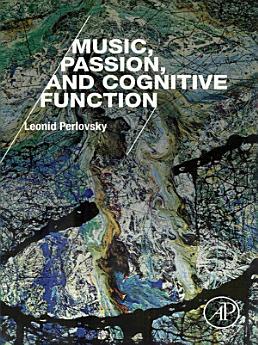Music, Passion, and Cognitive Function
2017年2月 · Academic Press
電子書
202
頁
family_home
符合資格
info
report評分和評論未經驗證 瞭解詳情
關於本電子書
Music, Passion, and Cognitive Function examines contemporary cognitive theories of music, why they cannot explain music's power over us, and the origin and evolution of music. The book presents experimental confirmations of the theory in psychological and neuroimaging research, discussing the parallel evolution of consciousness, musical styles, and cultures since Homer and King David. In addition, it explains that 'in much wisdom is much grief' due to cognitive dissonances created by language that splits the inner world. Music enables us to survive in this sea of grief, overcomes discomforts and stresses of acquiring new knowledge, and unifies the soul, hence the power of music. - Provides a foundation of music theory - Demonstrates how emotions motivate interaction between cognition and language - Covers differentiation and synthesis in consciousness - Compares the parallel evolution of music and cultures - Examines the idea of music overcoming cognitive dissonances
關於作者
Dr. Leonid Perlovsky is Professor at Northeastern University Psychology Department and jointly at Engineering Department, also CEO LP Information Technology, past Visiting Scholar at Harvard Medical School Athinoula Martinos Brain Imaging Center, Harvard School of Engineering and Applied Sciences, Technical Advisor and Principal Research Scientist at the AF Research Lab. Together with colleagues around the world he creates a new area of science Physics of the Mind that turns psychology into "hard science". Physics of the mind has explained wide areas of psychology not previously understood including conscious and unconscious, has predicted unexpected psychological phenomena many of which have been experimentally proven in most prestigious labs around the world; experimental tests and theoretical aspects of physics of the mind open a wide area for future research. Among revolutionary successes of physics of the mind are cognitive-mathematical modeling of several fundamental psychological areas that have resisted mathematical modeling for decades, including perception and cognition, neural mechanisms of abstract concepts, interaction of cognition and language (unresolved since Chomsky), cognitive functions of aesthetic emotions (misunderstood since Kant), cognitive functions of emotions of the beautiful, mechanisms of the high meaning, interactions between beautiful and meaning, cognitive functions of musical emotions, and the reasons why music affects us so much - what Darwin called the greatest mystery. Dr. Perlovsky has created a mathematical foundation for physics of the mind, a new area of cognitive mathematics, dynamic logic, which overcomes computational complexity preventing mathematical modeling of the mind since the 1960s. He served as Chief Scientist at Nichols Research, a $500mm high-tech DOD contractor, as professor at Novosibirsk University and New York University; as a principal in commercial startups. His company predicted 9/11 market crash a week before the event and supported the SEC investigation. He is invited as a keynote plenary speaker and tutorial lecturer worldwide, including most prestigious venues such as the Nobel Forum at Karolinska Institutet; authored more than 500 publications. He organizes international conferences and serves on the Boards of professional societies. "Music: Passions and Cognitive Functions" is his most recent book. He has founded and serves as Editor-in-Chief for "Physics of Life Reviews, the IF=9.5, ranked #3 in the world among 84 journals in biophysics. He received prestigious awards including the INNS Gabor Award, and the John McLucas Award, the highest US Air Force Award for basic research. In 2016 he has been appointed Professor at St Petersburg Peter the Great Polytechnic University.
為這本電子書評分
歡迎提供意見。
閱讀資訊
智慧型手機與平板電腦
筆記型電腦和電腦
你可以使用電腦的網路瀏覽器聆聽你在 Google Play 購買的有聲書。
電子書閱讀器與其他裝置
如要在 Kobo 電子閱讀器這類電子書裝置上閱覽書籍,必須將檔案下載並傳輸到該裝置上。請按照說明中心的詳細操作說明,將檔案傳輸到支援的電子閱讀器上。





